
drag badge here
Luke
gamer level 5
4131 xp
4131 xp
followers
26
26
Use my invite URL to register (this will give me kudos)
https://boardgaming.com/register/?invited_by=xrathus
profile badges




recent achievements

Treasure Map
Explore select games by completing a series of exploration actions. learn more »
Explore select games by completing a series of exploration actions. learn more »

I Play This One a LOT
Play a specific game 20 times.
Play a specific game 20 times.

Advanced Grader
Grade 100 more reviews or tips by clicking "Yes" or "No" in response to the question "Was this helpful?"
Grade 100 more reviews or tips by clicking "Yes" or "No" in response to the question "Was this helpful?"

I Walk the Talk!
Claim that you have played a game today by clicking the "Played Today!" button on a game page 100 times.
Claim that you have played a game today by clicking the "Played Today!" button on a game page 100 times.





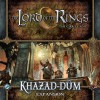





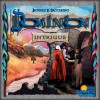









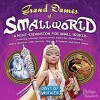







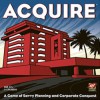



















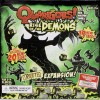




























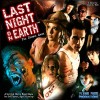



The Lord of the Rings: The Card Game
Lord of the Rings – The Card Game is a co-operative, Living Card Game that pits the heroes of Middle Earth against the forces of darkness. The game is loosely set in the time between the Hobbit and the Lord of the Rings trilogy and is broken down into a variety of modular quests. The game is highly customizable as both the quest and players assemble decks of cards which modify the play experience.
It’s worth a little side discussion to define a Living Card Game (LCG). A LCG is Fantasy Flight Games’ proprietary term to describe a customizable card game with a fixed distribution of cards. This simply boils down to how the cards are distributed and purchased. Rather than buying randomized cards, an LCG will provide you with a set of cards in which the contents are fixed and known prior to purchase. Once purchased, the cards can be played as deemed useful to the player, keeping the customizable element, but reducing the need to purchase blind packs of cards in hopes of finding the rare cards a player wants to play with.
Prior to playing LotR – The Card Game, a single quest must be selected by the players. The base game includes three quests to choose from and they have varying difficulties; further expansions increase the amount of quests available. With a quest chosen, players will create both an encounter deck (composition is determined by the quest), which represents the forces of darkness, and player decks (composed by the players) that represent the hero’s resources. As with most customizable card games, the cards interactions are what drive the complexity and strategy of the game and both encounter and player cards are broken down into a vast amount of sub-groups and sub-types. Quests are typically broken down into multiple stages that are revealed in sequence and the individual stages as well as the overall quests have variable requirements for success.
At the core of the player decks are the heroes that are in-play from the beginning of the game and generate the resources necessary to play the remaining player cards. As a player, the heroes and remaining cards from the player decks are used to address three conflict areas presented by the encounter deck for each quest: questing, defending, and attacking. Players can typically only commit their heroes and supporting cards to one of these conflict types at a time, so the game is essentially the management of all three conflicts with the resources available to them. A game is won when the players meet the various requirements of the chosen quest. The game is lost when all player heroes are killed or accumulate too much threat (essentially a negative resource) thematically receiving the wrath of Sauron.
I have intentionally written this review to provide a basic overview of the game, and avoided detailed discussion of deck assembly. Players familiar will collectible card games will find many aspects of deck construction comparable, but may find the mechanics to make this game co-operative innovative and exciting. Since LotR – The Card Game is based on a LCG business model, be prepared to make further investments in expansions to get the full value of out this game!
Replay: Customizable player decks and multiple modular quests are what drive the replay value of LotR – The Card Game. Played alone without expansions, the base game is slightly limited since it includes only a starting amount of cards and the depth of strategy grows with each expansion. Unlike many other collectible card games, the LCG model and co-operative play encourage a gaming group to pool funds to take full advantage of the expansions and expanded replay. The game also includes a point tracking system to rate the success of given quest, allowing players to compare final score or play again to beat their own records.
Components: The cards are standard quality, however the artwork is fantastic and completely new. While I enjoy the artwork of Alan Lee, John Howe, Ted Nasmith, the Hildebrandts, and Tolkien himself, the game has made a wonderful decision to create their own art to illustrate their vision and does not use images from the recent films either. The game also comes with a handful of tracking tokens and threat trackers for two players. As the game will support one to four players, the choice to only include two threat trackers seems odd – my full thoughts on this are included in Personal below.
Learning Curve: Medium. The rules are designed to work under a variety of quest scenario and are fairly straight forward. Basic terms will need to be learned, but the rulebook is very helpful and provides good player guidelines. As the game expands, individual card updates and errata will be released and card interactions may need to be clarified.
Defense:
Co-op card game? – While this game can be played solo against the quest, the game really does shine with multiple players. The innovation to combine the customizable elements of the player deck and a modular quest experience is amazing.
Collectible games cost lots of money – Yes, however the LCG model reduces the costs considerably and you can choose to pay for the cards you want to play with. Additionally, the co-operative game play makes pooling funds an option that doesn’t work as well in a competitive format.
Another Lord of the Rings game – I will admit that I get a chuckle out of the name “The Card Game”, but that aside I really feel like the co-operative game play and individual quests really support the theme. The game designers have done an excellent job capturing many of the elements of Tolkien’s world.
Personal:
I agonized over purchasing this game because I love the Lord of the Rings setting but worried about the execution and many of the reasons listed above. I should say I agonized until someone showed me a demo of the game – I fell in love instantly. I have a history of enjoying collectible card games, but like to be conscience of my budget so I really appreciate the LCG format.
The only issue I have is the starter box card distribution and threat trackers do not fit with the larger LCG concept. The game allows a maximum of three copies of a single card in any player deck, however the starter box provides only a single copy, or two copies of some of the more “powerful” player cards where as all the expansions provide three copies of every card. Combined with the inclusion of only two threat counters, it’s as if it was intended for players to buy two starter boxes, but you end up with useless extra quest, encounter, hero, and many player cards. It would make more sense to me to provide three copies of every player card, and if the price point needed to be managed, split the starter into two parts with two quests and two player spheres each half. This would keep with the overall LCG concept of only purchasing what you want to use. Based on their website, FFG’s deluxe expansion, Khazad-Dum, (which kicks off the next story block) has learned from this issue.